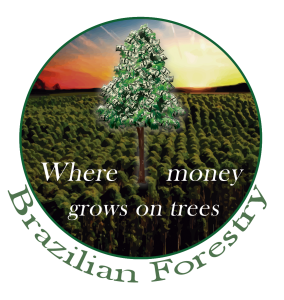Carbon Credits
Carbon sequestration is a process of removal of carbon dioxide. This process occurs mainly in oceans, forests and other organisms that, through photosynthesis, capture carbon and release oxygen into the atmosphere. It is the capture and safe storage of carbon dioxide (CO2), thus avoiding its emission and permanence in the Earth’s atmosphere.
The concept of carbon sequestration was endorsed by the Kyoto Conference in 1997 to contain and reverse the accumulation of CO2 in the atmosphere with a view to reducing the greenhouse effect.
Brazil has the best physical and natural conditions to meet the requirements of the Clean Development Mechanism (CDM), due to its forestry potential, such as high land, abundant labor, favorable climate, advanced silvicultural technology and a competent forestry administration.
The world need more and more wood and carbon credit. Brazil is the country with the greatest potential to deliver all of this under a balanced and sustainable approach.
Carbon Credits
Carbon sequestration is a process of removal of carbon dioxide. This process occurs mainly in oceans, forests and other organisms that, through photosynthesis, capture carbon and release oxygen into the atmosphere. It is the capture and safe storage of carbon dioxide (CO2), thus avoiding its emission and permanence in the Earth’s atmosphere.
The concept of carbon sequestration was endorsed by the Kyoto Conference in 1997 to contain and reverse the accumulation of CO2 in the atmosphere with a view to reducing the greenhouse effect.
Brazil has the best physical and natural conditions to meet the requirements of the Clean Development Mechanism (CDM), due to its forestry potential, such as high land, abundant labor, favorable climate, advanced silvicultural technology and a competent forestry administration.
The world need more and more wood and carbon credit. Brazil is the country with the greatest potential to deliver all of this.
